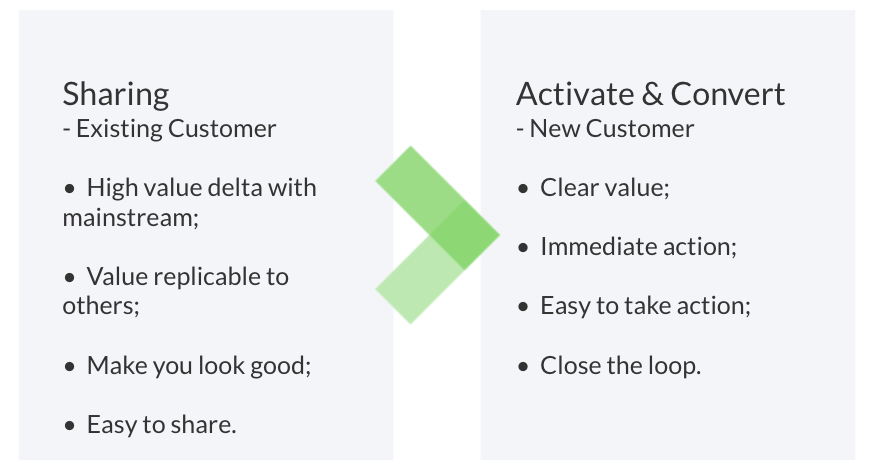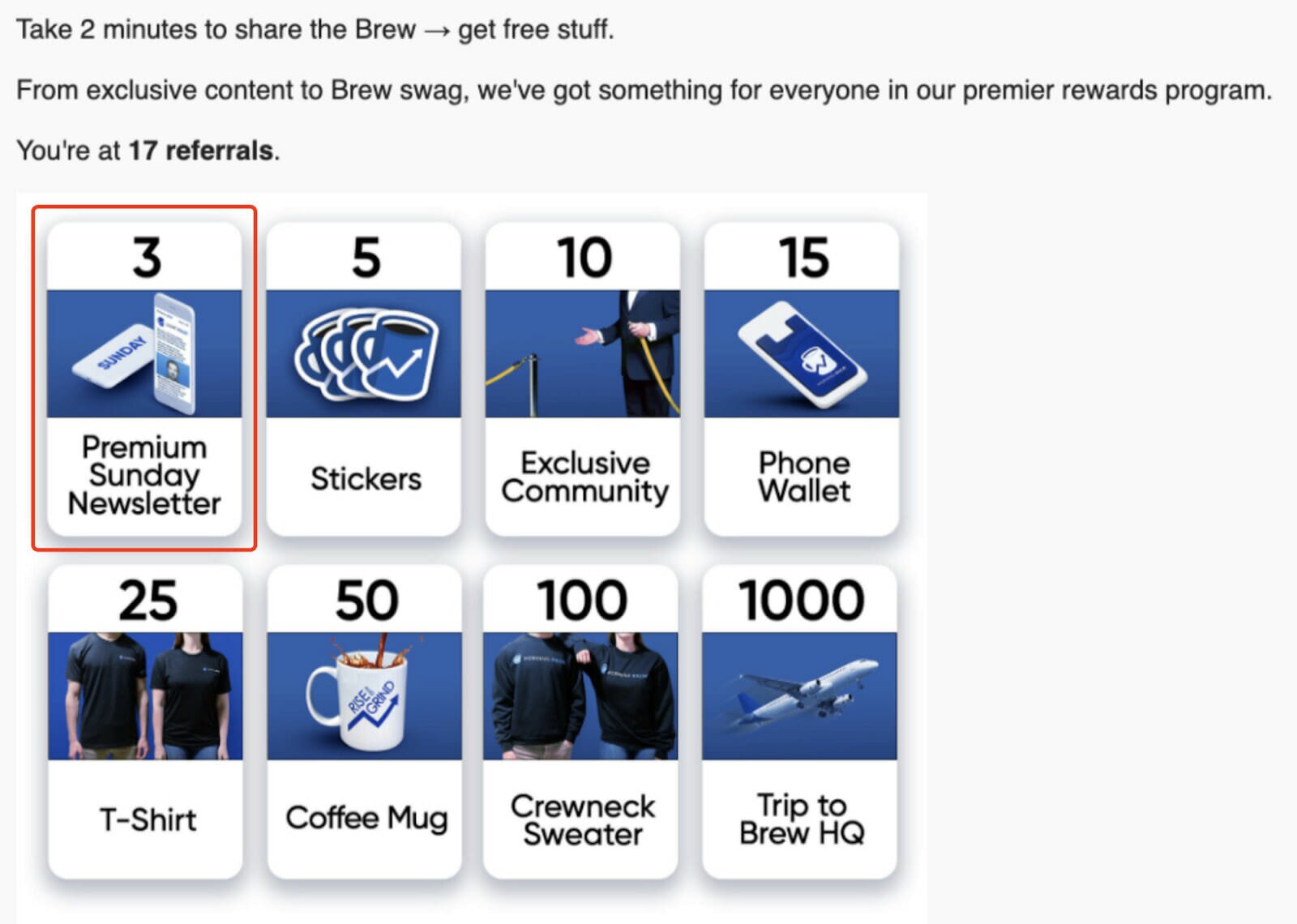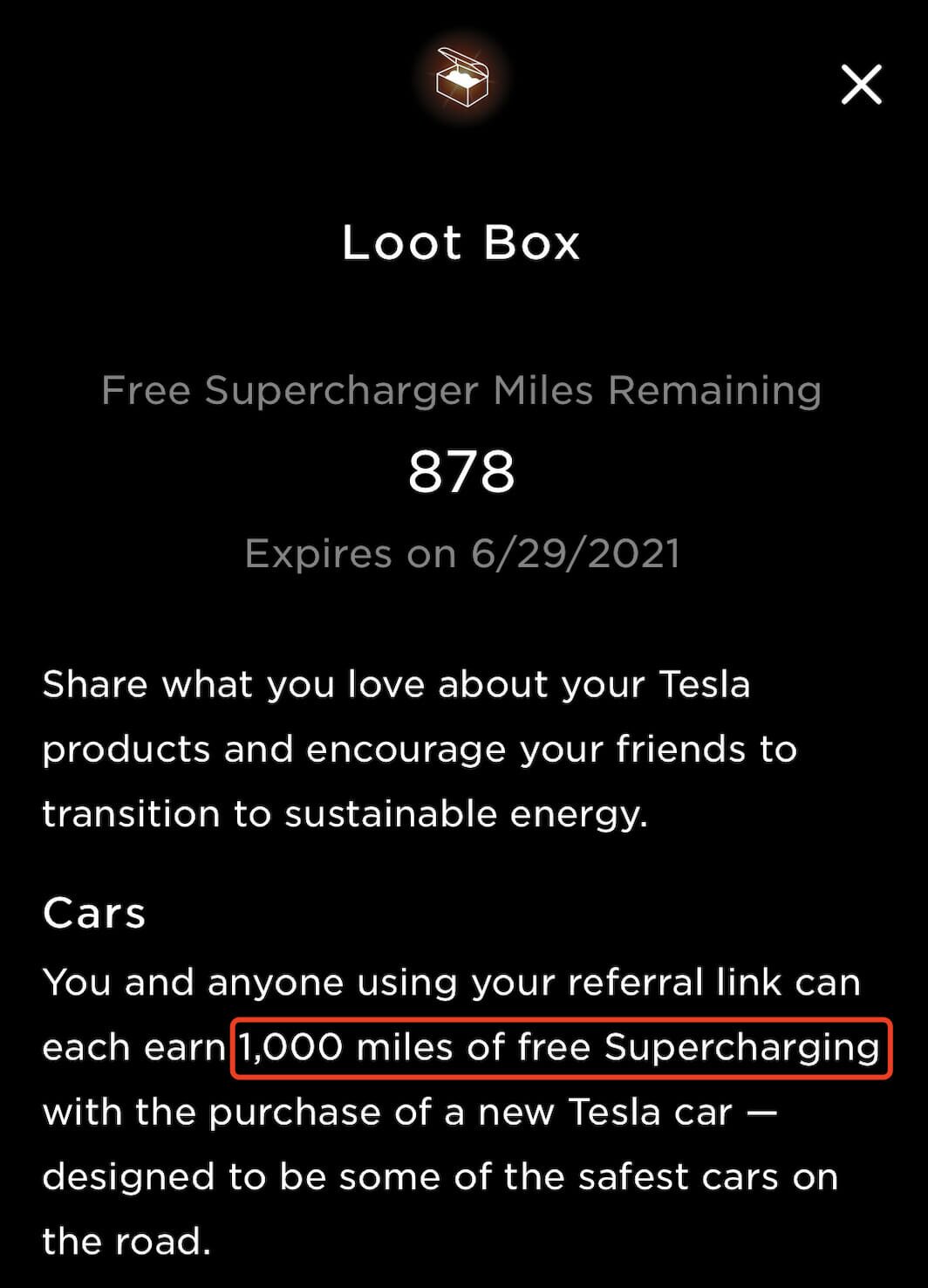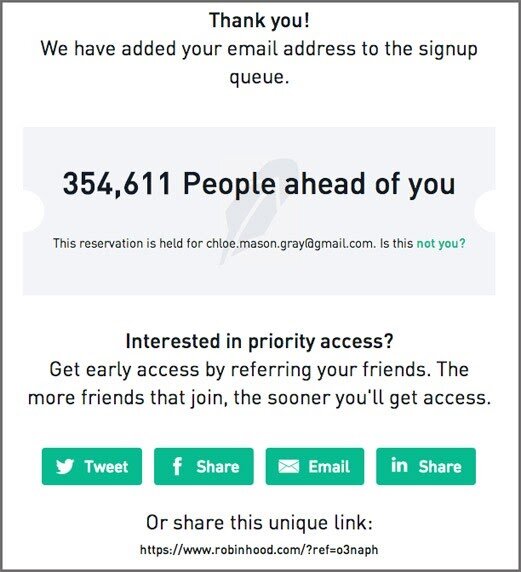What is a referral program? A referral program is a product-driven go-to-market strategy utilized widely by brands across industries, to motivate existing customers to recommend the brand and its products to their family and friends.
Referral has two-sided dynamics. By referring their family or friends, existing customers will get rewards, and the people that they referred to will also get a discount, benefit or reward for buying/using the product.
Many top brands in the industry see over 30% of their sales come from referral channels, which explains why the channel is taken so seriously by the brands that are the strongest and most unique.
Another advantage of the referral channel is the marketing expense you spent on referral is used on your most loyal customers, instead of paid to marketing agencies, Google ads or Facebook ads. By doing this, a fly-wheel will be built that strengthens both customer relationships and sales growth.
Boiling the referral dynamics down to the fundamental building blocks, how referral happens is if an existing customer shares something about you or your product, to someone new, who is not your customer yet. Then, the new customer got interested and went through the process to become your customer.

As a customer of a particular product, if you, firstly, love the product, it normally means there is a high value delta between the product and the mainstream alternatives. Beyond that, If you, secondly, trust the outcome/value of the product is replicable to others; thirdly, sharing the product will make you look good (meaning, your friends will love it, be impressed by your knowledge..etc); fourthly, there are no hoops you need to jump over to refer and also, if you will get something you personally value as a reward, then you are very likely to share the product with people in your life. This whole process boils down to: high value delta with mainstream, value replicable to others, sharing will make you look good, and lastly, sharing is not difficult.
Once your customer takes the action and a referral is sent to your new lead, it becomes very important for the new customer to clearly see the value and be able to take immediate action. We all have a very short attention span, so it’s important to capitalize before that high Dopamine value drops and give the new lead a quick path to realize the value. What if the new lead stops half-way? The question becomes how do you circle back and close the loop with reminders and notifications.
If you look at the products out there, some of the products actually don’t try very hard to make it easy for a new customer to realize the value. For example: if you share a zoom meeting with someone else, that person will have to download the client side application of zoom in order to join the meeting. This doesn’t seem the easiest way, right? The reason why zoom has decided to take the harder route is because: firstly, they believe in the value of their product, which means even conversion to get the value is a bit longer, they are not too worried about the drop-off of their best customers, who will be retained. Secondly, having zoom meetings on the client app is actually a core part of the awesome zoom meeting experience.
Because of the above mentioned reasons, zoom intentionally made the conversion path harder, which actually worked for them.
How to build a winning referral program? Having spent years building successful referral programs at industry-leading companies and brands, I have summarized a few key takeaways.
Takeaway 1: relevance is key
The below screenshot is taken from a newsletter product: morning brew. The morning brew team has consciously made their reward program to be highly relevant to their main products. There are two benefits to doing this: firstly, you know your customers will be more likely to be fond of those rewards because they are relevant to your main products. Secondly, it doesn’t distract the customer. Instead, it creates a cohesive experience along with the main product itself.

We did something very similar at Tesla. Over the years, as we iterated on the referral program at Tesla, one reward that we almost always used, was the free supercharging benefit. This benefit is super relevant to Tesla vehicles, needless to say. We know this reward will be useful for our customers, and it creates one cohesive experience with the Tesla vehicle itself.

When Tesla wants to tune demand up a bit, what lever can we pull? We tune up the free supercharging mileage. Over the years, we have done many campaigns where there is a short window when the free supercharging miles are multiplied by five times. It is because of the high relevance of the reward that makes the mechanism work.
What if you can’t easily find something to make that is very relevant to your main product? Let’s take a look at this example below.

I took this screenshot from a podcast website. The reward they use is AirPods Pro. As you can see, the term relevance is a really broad term, the key is to make your referral program, including the rewards part, lovable, in the context of your main products. Relevance drives the intent to share high, which means the customers will be encouraged to tell more friends about your product, not only because they love your product itself, but also because they love the rewards that come alongside.
Takeaway 2: make the first milestone achievable
We at Tesla have tried to make the first milestones as achievable as possible for an owner. When a customer makes just one successful referral, he/she gets a lot of rewards. If you are a romantic, you know what it feels like to imagine your photo orbiting in deep space, over 20 thousand miles away from the earth surface. If you prefer something that’s more physical, we have a hat for you that is signed by Tesla’s chief designer and Elon himself.
The truth is, once you get over the hurdle of the first referral, many Tesla owners actually refer to many more new buyers even than what they would imagine. Make the first milestone truly achievable and attractive, and the benefit is not only that one referral.
Takeaway 3: use exclusiveness and FOMO to motivate sharing
Again, the morning brew team did a great job here as well. If you enjoy their newsletter, you wouldn’t want to miss the premium Sunday edition.
The exclusiveness of this reward really drives the readers to work hard for the morning brew team. Many referral programs have something very special that is exclusive. You can’t buy it even if you want to. By doing this, you reward your best customers, build up loyalty and also align the benefits between you and your customers really well.
Another interesting example worth taking a look at is the waitlist referral program that the Robinhood team did earlier in their startup journey. When you sign up for Robinhood’s private beta, the system will let you know your exact position in the line. the only way to boost your position—to get priority access—is to refer more people to join the waitlist!

Because of the killer value prop of Robinhood, people actually really want to be able to use the product sooner, which attracted over a million of private beta sign-ups, even before they had a product.
By implementing and iterating on a referral program that is highly relevant to your brand and product, highly achievable in terms of the first milestone, and exclusively designed for your best customers who enjoy the product so much that they refer their friends to join too, you will build up an engine that works relentlessly to drive your growth and sales. What goes beyond the growth engine, is the customer loyalty engine. By incentivizing your best customers, they will reward you with their loyalty, and that creates a powerful positive feedback loop that will make your business a better one altogether.
Discover more content on product strategy. For even more content on a range of product management topics, see our Content A-Z.







